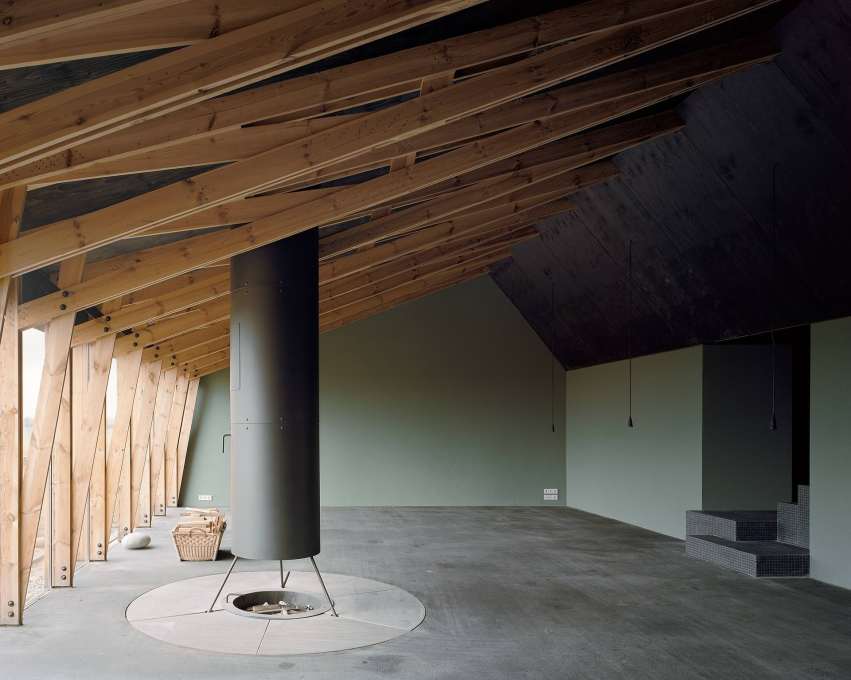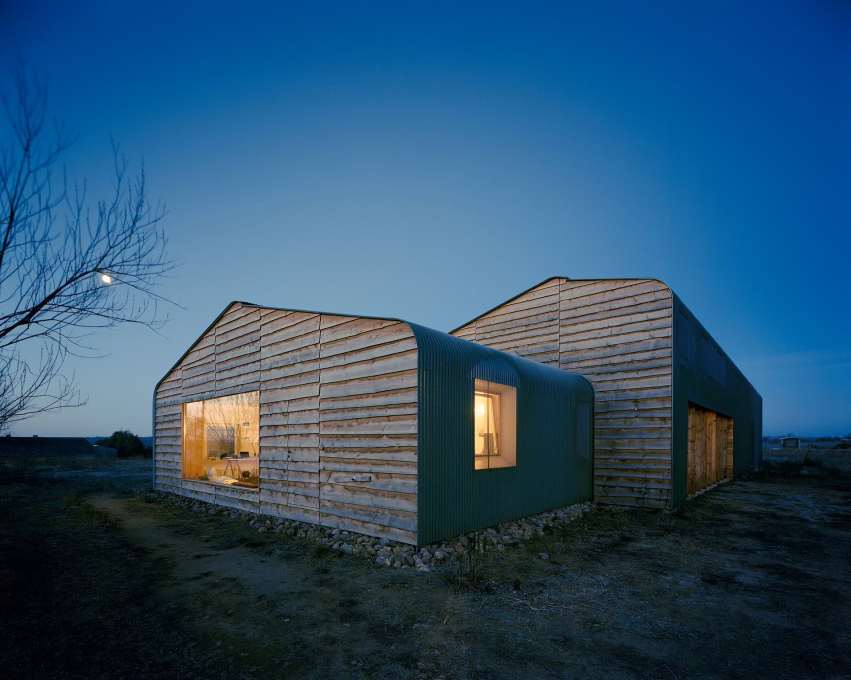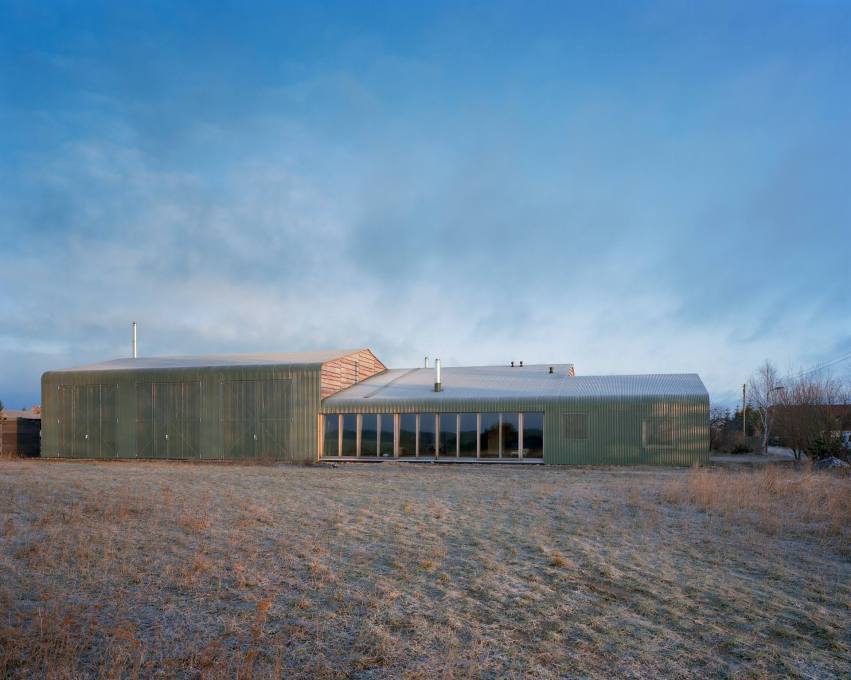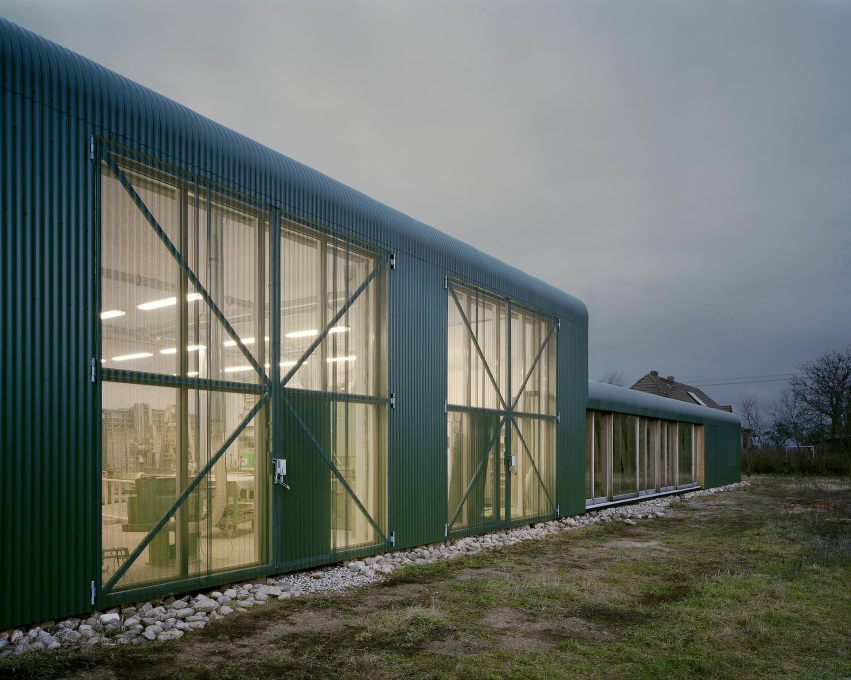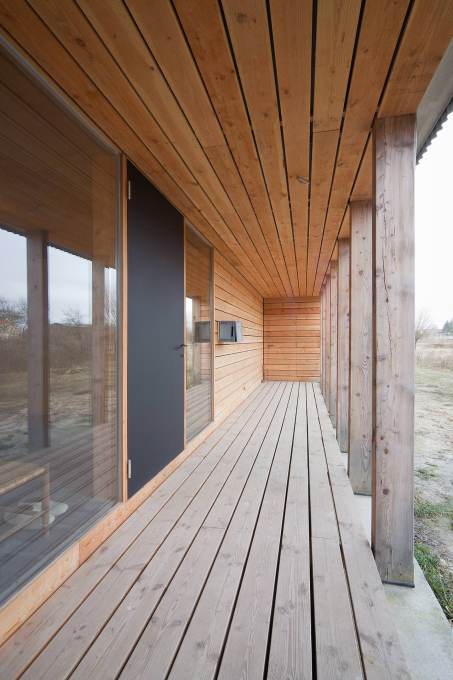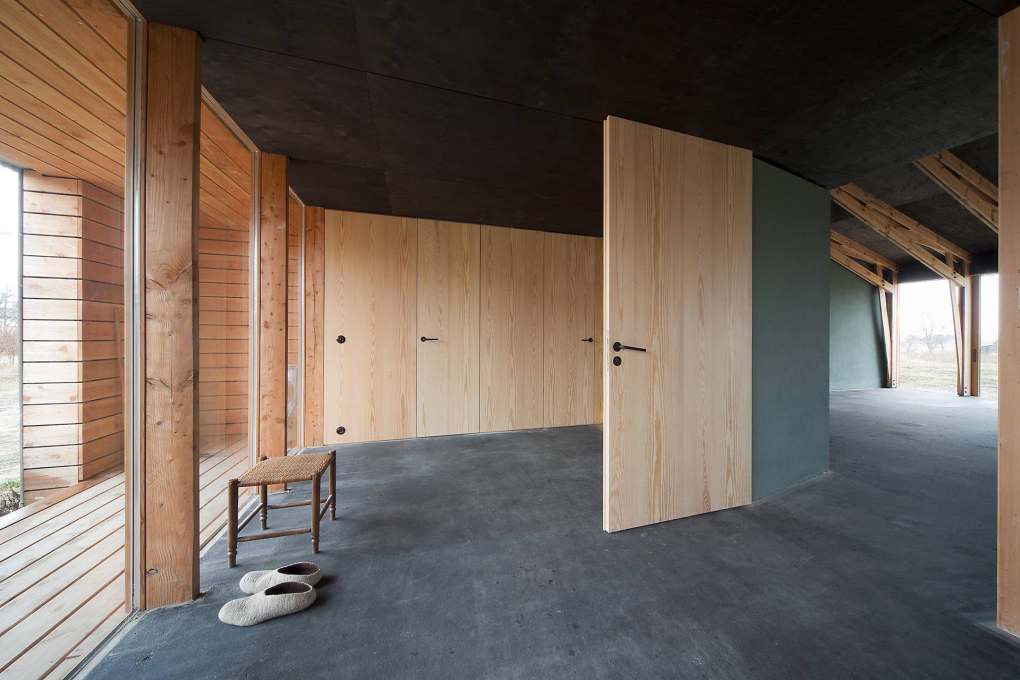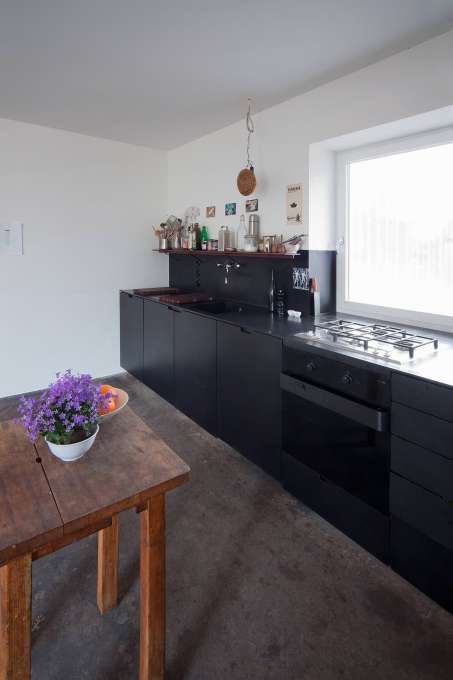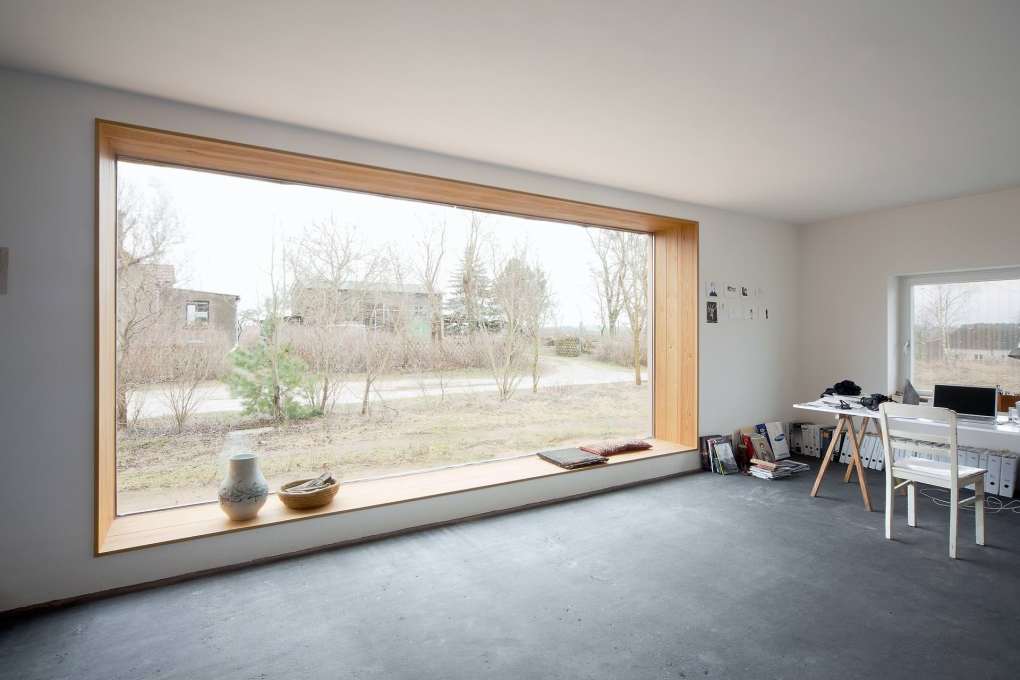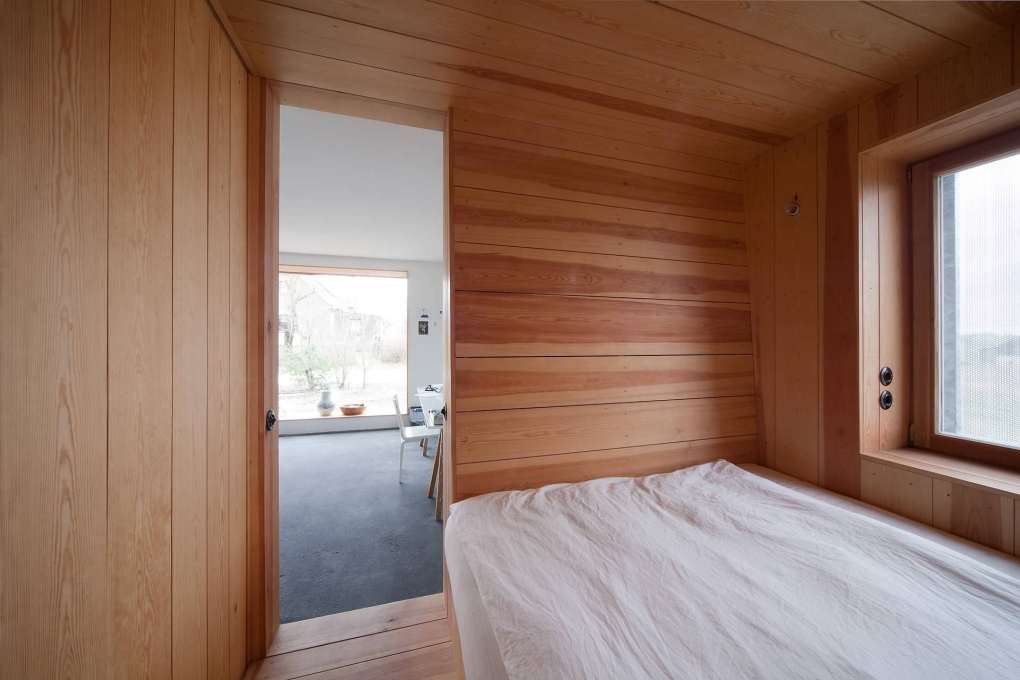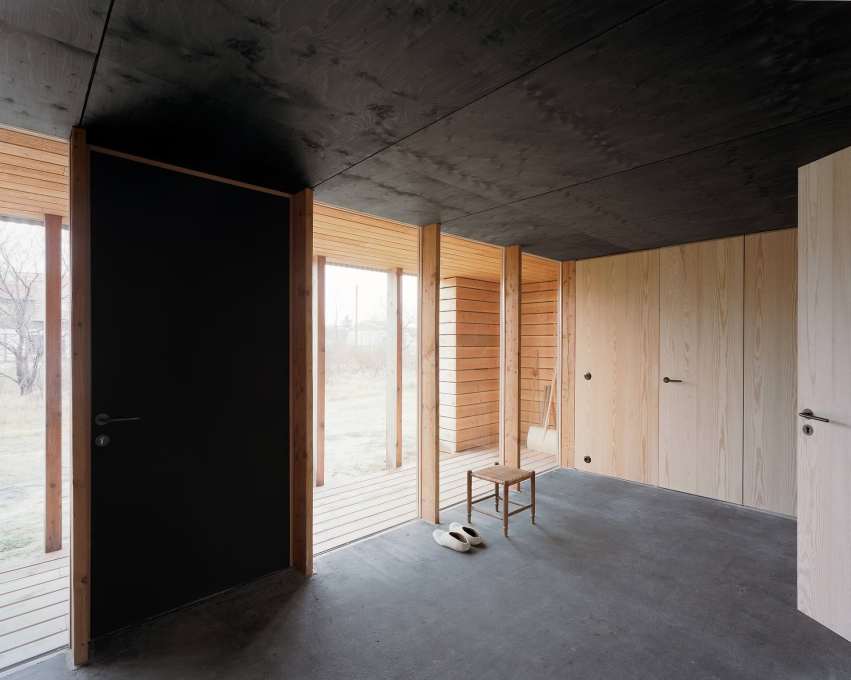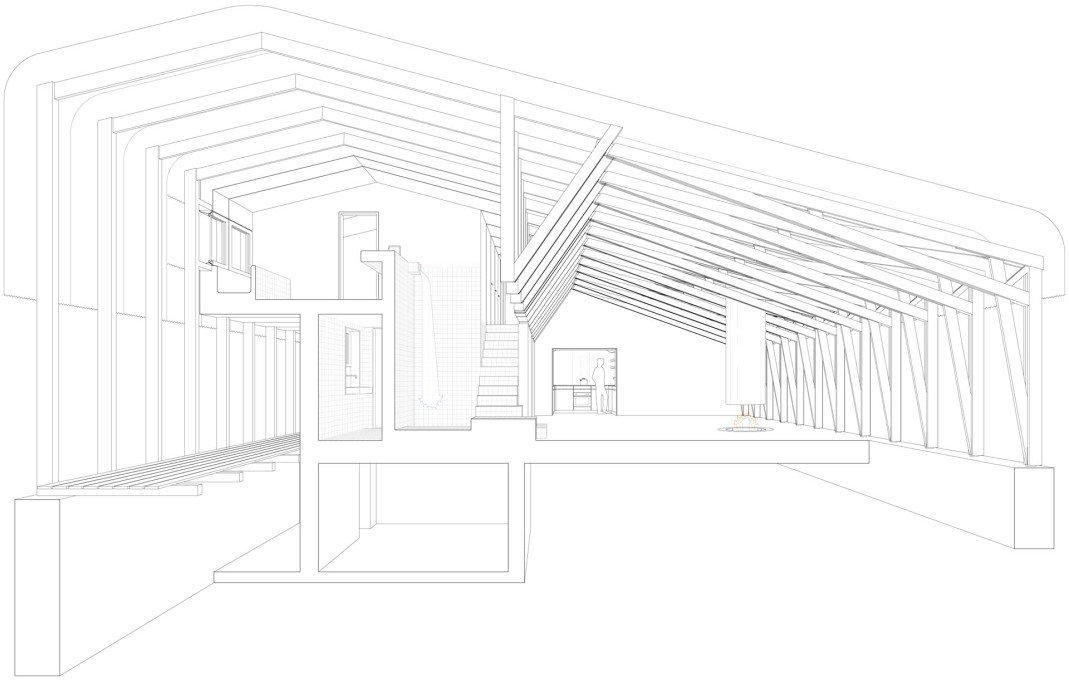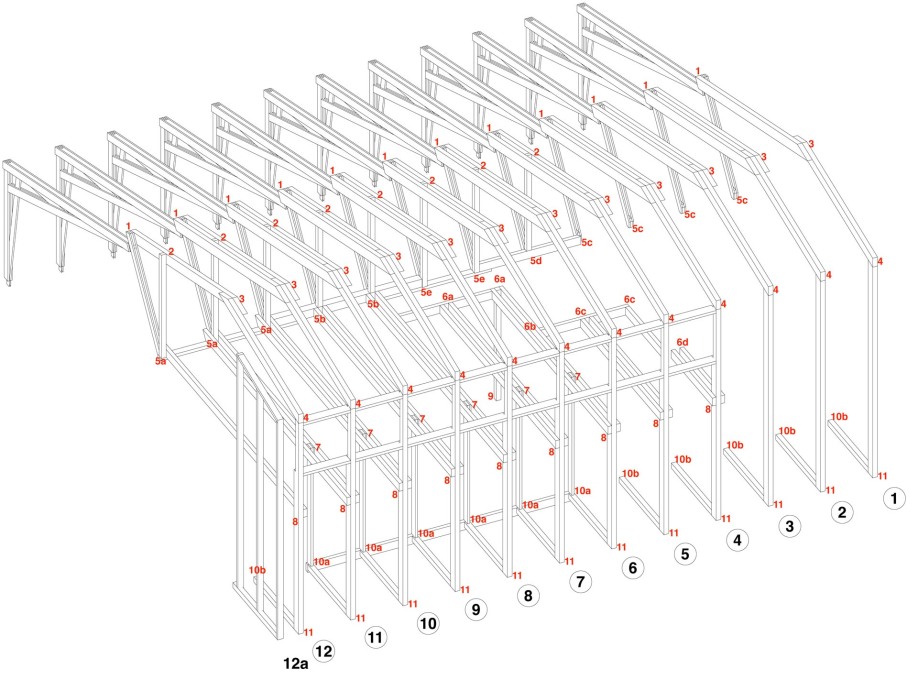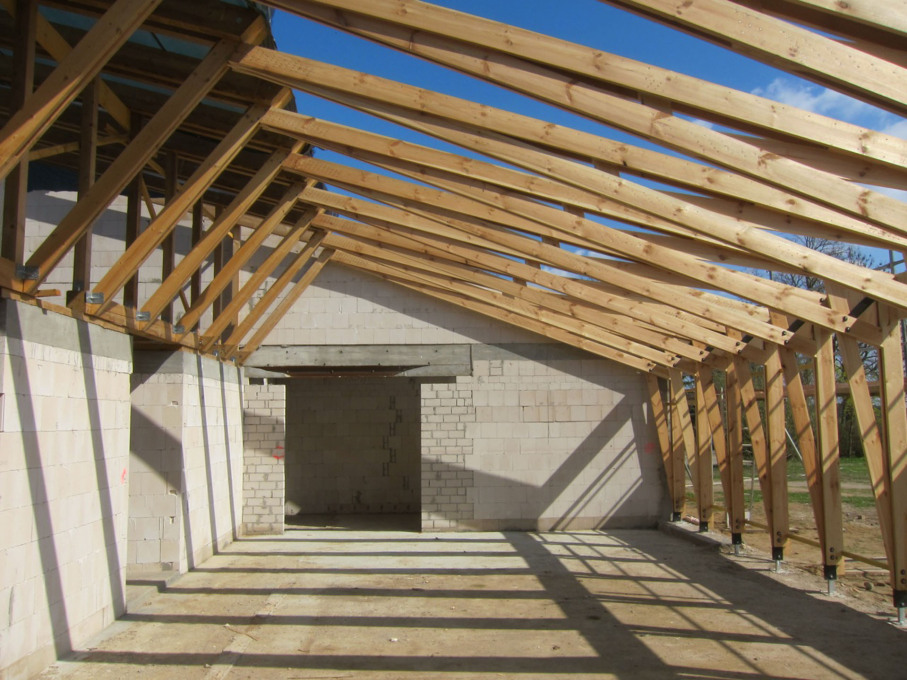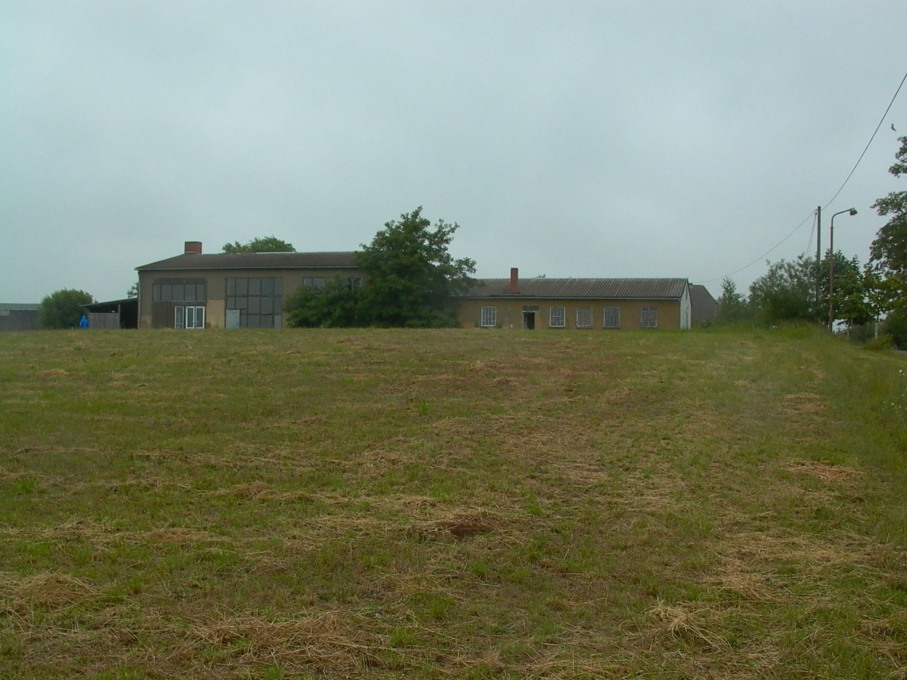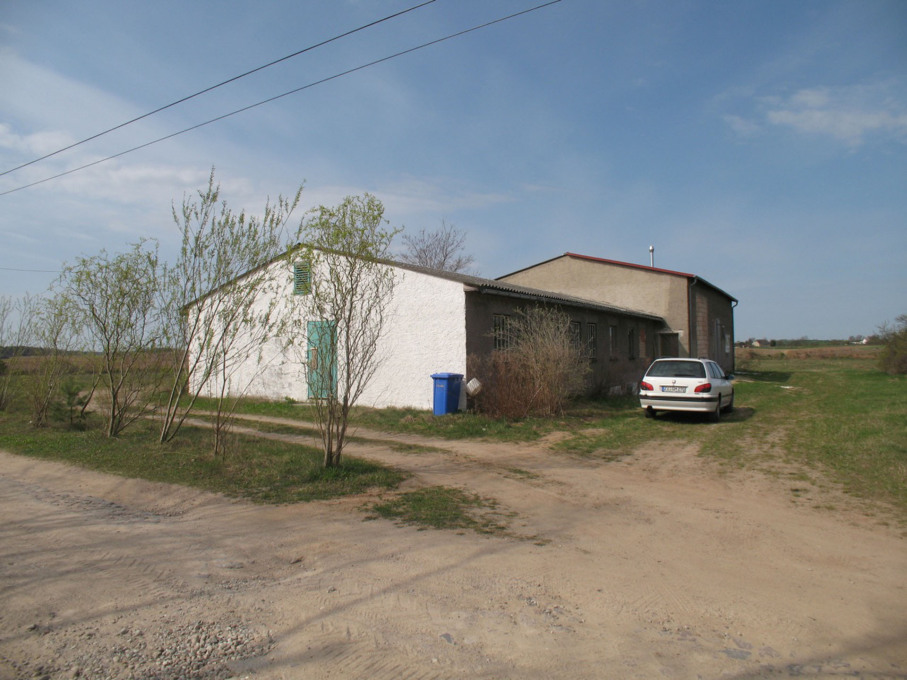The Brandenburg countryside surrounding Berlin is full of empty buildings and real estate renovation potential. Architect Thomas Kröger refunctioned a former GDR agricultural cooperative building into a workshop and house for a carpenter and product designer. Sophie Lovell reports on a werkhaus to feel very much at home in.
This house in the Uckermark, northeast of Berlin used to be an LPG (Landwirtschaftliche Produktionsgenossenschaft) building, a “rather poor construction from 1987, originally built as a metal workshop and staff facilities for the local agricultural cooperative”, says Kröger. Being a carpenter, the client Gerhard Schütze was very much involved in the construction. He built most of the interior finishes designed by the architects as well as the wooden frame of the main showroom.
“The hybrid character of working and living is rooted in the traditional building typology of the Uckermark”, adds Kröger, “the typical local Siedlerhäuser are long stretched out buildings perpendicular to the street, with living spaces towards the front and working spaces and barns further back under the same roof.”
Brandenburg winters can be very cold (temperatures of minus 20 degrees celsius are not uncommon), so much attention was paid to the insulation. The original uninsulated(!) brick walls of the LPG building were covered with 16cm insulation below the rear ventilated metal facade, and the new roof acquired 20 cm of extra padding. Heat is supplied by a woodchip boiler fuelled with waste from the carpentry workshop.
The most prominent feature of the conversion is the new skin covering both facade and roof. The newly constructed central section defines the building’s new shape. The green corrugated metal skin is bent/cambered at the eaves with a 60 cm radius, “allowing façade and roof to become one and to let the house sit softly within the landscape”. The metal sheets are perforated in front of the windows, allowing sunlight into the interior and views to the gently undulating glaciated landscape beyond without interrupting the skin and shape of the building.
Despite, or perhaps because of, its functional character, this building has a luxurious aspect that comes from an intelligent distillation of the needs and pleasures of living. Details such as the fireplace, veranda and kitchen furniture, all made with simple, contrasting raw and finely-finished materials, together with an entirely satisfying inside/outside ratio, all combine to fulfil those needs but without any decorative excess. It is the subtle wealth of the landscape that is celebrated here alongside the honest skills of the craftsman and a life spent at one with one’s work.
– Sophie Lovell
After stints with Norman Foster and Max Dudler respectively, architect Thomas Kröger founded his own Berlin practice in 2001.




